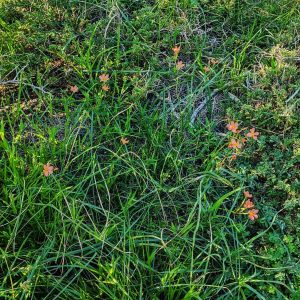Two-leaf Cape Tulip (Moraea miniata), one of several South African species of the genus established in Australia and nowhere else in the world.
Imported alongside other varieties as an ornamental bulb from the 1850s, by the 1890s this species had jumped the garden fence across the colonies. In 1892 and 1893, an infestation of the plant in a paddock at Pascoe Vale repeatedly caused recurring sudden illness and deaths of itinerant cattle. As one writer noted, ‘it blooms at the present time about Pascoe Vale very beautifully… it is a strange fact that cattle accustomed to graze about the place do not seem to be affected, and in all cases it has been cattle coming from other pastures which have died.’
This local crisis spurred newspaper coverage and production of a 15-page bulletin by the Government Vegetable Pathologist (yes, really). This reported the (lethal) results of feed tests on rabbits and cattle, and included correspondence with the colonial botanists here (von Mueller) and at the Cape Colony. The latter was very familiar with the plant, noting that it was ‘known to every child in the colony as the Cape Tulip, not for its therapeutic use, but for its obnoxiousness.’
von Mueller opined that ‘It is known in other places besides Pascoe Vale, but… it is hoped that this brief notice of it may lead to its being promptly destroyed in any garden or cemetery where it may exist.’ As may be guessed, this did not happen.
Now a major agricultural and environmental weed in some areas, familiar stock engaged in selective grazing can raise Cape Tulip to dominate the local groundcover, with corm (bulb) densities as high as 7000 / sq m.
The photographed plants are established on a shoulder of the Merri Creek at Reservoir. They are likely a satellite establishment from windblown seed or cormils from an infested private goat paddock across the creek, some 250 metres to the NW. At that fenced site (10) hummocked earth suggests an introduction of contaminated soil from a distance, although there are also previous survey records of the species further north on the creek.
View Original Post on Instagram
Search for information about Moraea miniata in the Flora of Victoria
View information and occurrences of Moraea miniata on the Atlas of Living Australia










